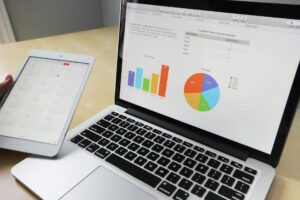Python has become one of the most well-known programming languages in the data analysis industry. Its flexibility, massive library, and simple syntax make it a favorite among data analysts.
The digital world that we live in is one of advanced technology, smart gadgets, and mobile solutions. Data is an essential component of every business and sector. A favorable and accurate method of gathering, analyzing, and interpreting the data flow is vital. These days, handling information can be costly and time-consuming due to the vast number of data. Therefore, the data science sector is expanding quickly and opening new opportunities.
What is Python for Data Analysis?
Python is a well-liked general-purpose programming language utilized extensively due to its adaptability and an enormous library of useful functions for intricate computations and analytics.
Python's extensibility allows for dozens more analytics-focused libraries, such as the popular Python Data Analysis Library (Pandas).
The NumPy library, which contains hundreds of mathematical operations, computations, and functions, is the source of inspiration for most Python data analytics packages.
The versatility and wide use of Python in developing intricate solutions are responsible for the popularity of Python analytics tools. To make the connection more private and secure you can try using the rotating proxy service.
It can also offer more capability to data analytics software since it is an actual general-purpose language, as opposed to domain-specific languages that have limited capabilities.
Moreover, Python outperforms other widely used languages for data analytics in terms of performance, and because it is more widely compatible with various languages, it is generally more convenient.
Python can swiftly surpass languages like MatLab or R, which is designed expressly for statistical analysis, due to their comparatively low memory and processing resource utilization.
Python's Applications in Data Analytics
Data analysts frequently possess knowledge of one or more programming languages. Python is still one of the most popular coding languages among Data Scientists and Data Analysts due to its ease of use and numerous libraries suitable for data analytics. Because Python is so understandable, data engineers and analysts can finish jobs faster because they don't have to enter as much code. Python is helpful in multiple steps of the data analysis process: data processing, data mining, and data visualization.
Python in data mining:
When APIs cannot be used to get data, the Python module Beautiful Soup comes in handy. This library is an effective tool for data scraping and format organization. Additionally, users may write programs to extract data from APIs and scrape structured data from the internet using the Python package Scrapy.
Python for Data Processing and Modelling:
Python contains two extremely useful libraries for data processing and modeling: NumPy and Pandas. NumPy, or Numerical Python, is a tool for organizing massive datasets. NumPy is also helpful for vectorizations of arithmetic operations on arrays. Pandas supply users with two distinct categories of data structures: series and data frames. Users can add or delete columns by transforming data into a data frame using the Pandas library.
Python for Data Visualisation:
Matplotlib is the very first Python visualization of information packages. This data visualization package is said to be the most well-liked and extensively utilized. A wide range of graphs, including interactive 2D graphs, scatter graphs, line graphs, and hist graphs, may be made using Matplotlib. Long numerical lists may also be visually appealing shown as pie charts, histograms, heatmaps, or other graphical representations using the Python module Seaborn, based on Matplotlib.
It provides an elegant and valuable high-level interface for displaying statistical visuals. Seaborn wants visualization to be an integral part of exploring and analyzing data. A range of dynamic, excellent data visualizations, including bubble charts, polar charts, histograms, box plots, scatter plots, and heatmaps, may be produced with the help of the graphic library Plotly.
Why learn Python for data analysis?
Python is regarded as the gold standard for data analysis in disciplines such as mathematics, business, science, and engineering. It makes studying Python a fantastic option for anybody looking to expand their skill set or making into a new data-focused job. When it comes to data analysis, there are a few features that set Python apart from other programming languages.
Python is quite simple to learn.
Users may become acquainted with the tool rather quickly because of the language's simple readability and straightforward syntax. Because of this, Python is the best option for a beginner programmer. Many different fields utilize Python. It implies that Python programmers have a wealth of specialized libraries at their disposal to assist them in completing field-specific tasks.
Python is an incredibly versatile language.
You may mine data from various sources, work with data sets, develop algorithms to analyze data, build data models, and access data by hooking into online services.
Python boasts a massive user base.
Due to Python's popularity, many developers are producing tools, documentation, and other resources for language users.
Python developers may expand their skills without incurring additional costs because of the abundance of freely available community-created tools and modules. Since there are seasoned programmers available to assist with any issues you may have, this vast community also makes learning Python easier for newcomers.

